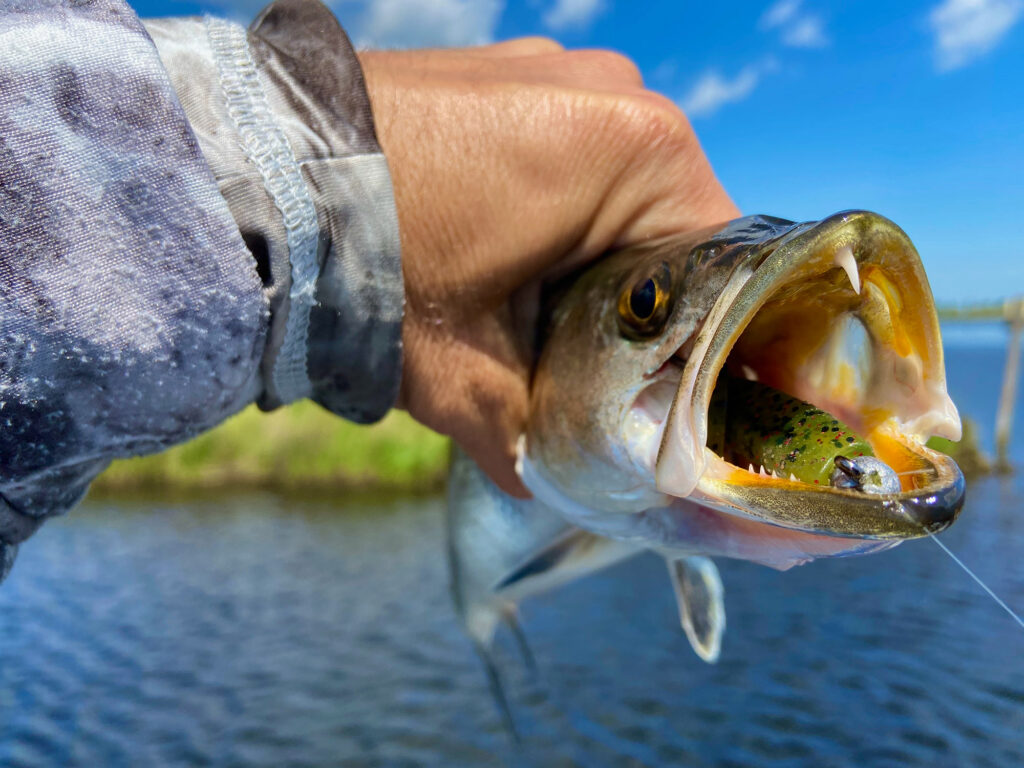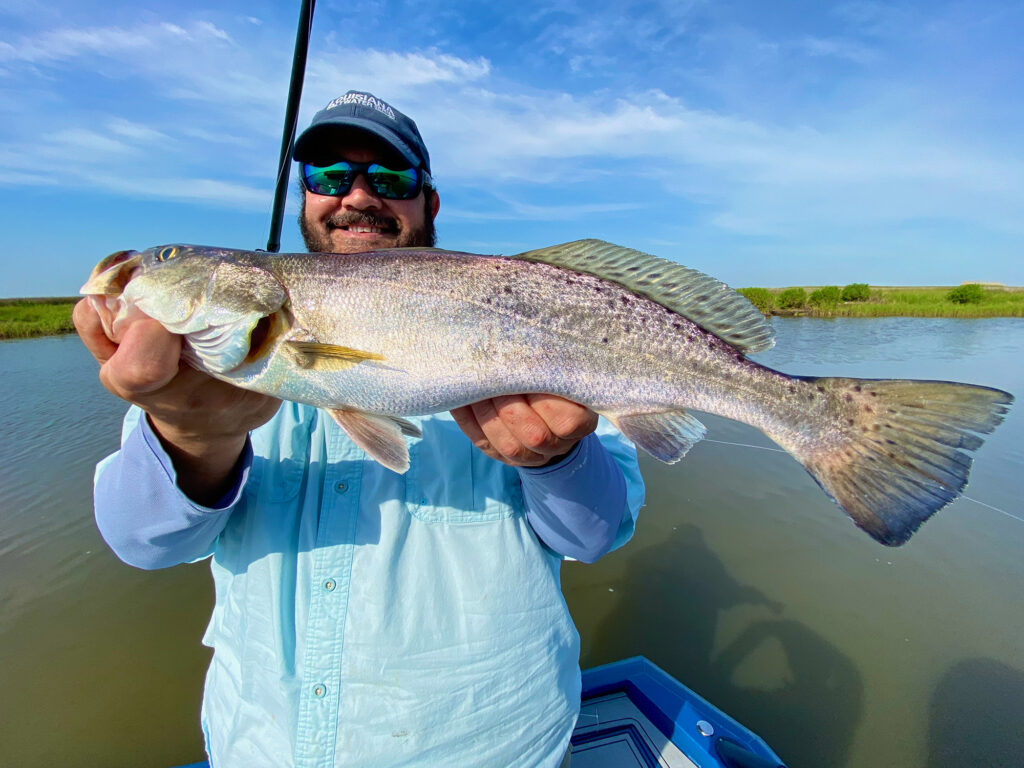
During the winter months, mama croakers spew their eggs into high-salinity offshore waters, where they’re fertilized by daddy croakers, and then, in the afterglow, both mama and daddy head off to find something to eat, leaving the youngsters to fend for themselves. Maybe it’s parental malpractice, but Mother Nature shrugs. She couldn’t care less.
Along the Louisiana coast, the larval and post-larval croakers are pushed by the tides into shallow waters, where they use seagrasses and detritus to hide from predators and feast on rotifers, copepods and even the very detritus that serves as their home.
Eventually, though, the fish outgrow the marshes, and begin to migrate in the spring. That’s when they face a murderer’s row of speckled trout — and unwittingly provide anglers with some of the best fishing action of the year.
Croaker Chaos

For the growing croakers, big spring tides are both a blessing and a curse. Riding the conveyor belt of the tides is how juvenile croakers make their way into the bigger bays, but these strong currents also slam the fish into ledge walls that disorient them and make them easy prey for specks. This, in turn, makes the trout easy prey for anglers.
It happens every spring in South Louisiana, and is most consistent in brackish marshes, where juvenile croakers proliferate. Anglers who want to maximize their productivity simply ride around looking for what locals call “boiling water.” Boiling-water areas show upwellings on the surface, where hard currents hit ledge walls and are forced upward. These are most commonly found in winding bayous with 10 to 20 feet of depth. Not every ledge wall will hold fish, but a high percentage of them do, and an angler who hits enough of them will certainly find a bite that has him posting pictures on social media.
Best baits, far and away, are 3½-inch soft-plastic paddle tails that most accurately mimic the size and action of the migrating croakers. Louisiana anglers fish those on ⅜-ounce jigheads, and will sometimes add a ¼-ounce jighead-and-paddletail combo fished as a double rig when currents are particularly swift. Figuring out how fish orient at each ledge wall is part of the fun, and shrewd anglers will frequently change their angles to find feeding specks. Hooked fish regularly upchuck juvenile croakers onto the boat decks of successful anglers. Often these fish are so recently ingested, they can be thrown overboard, where they swim down, probably to be eaten by another trout.
Spring Seatrout Success

Depending on water temperature, the bite will begin around the first of March and stretch almost to the summer solstice. By then, most of the mature specks have moved offshore to spawn, leaving behind only the undersized immature fish, along with a host of pests, like hardheads and gafftops.
But during the run, the specks are shockingly large for Louisiana marsh fish. An 18-inch average is about the norm, and several fish in the schools will stretch between 20 and 24 inches. In comparison, anglers fishing marsh lakes and expansive bays during this same time of year will typically be plagued by undersized and barely legal fish.
Though specks are the primary beneficiaries of the croaker migration, other species also notice and take advantage of the easy meals. Redfish are ever present, and the pattern delivers far more bites from black drum, flounder and largemouth bass than unfamiliar anglers might expect. Given the onslaught, it defies belief that any croaker survives to reach offshore waters and complete the spawn cycle, but clearly a whole bunch do. Despite getting no help from their parents.








